The best computer monitors at CES 2022
There's something new for every gamer, professional, and web surfer.
 Credit:
LG
Credit:
LG
Products are chosen independently by our editors. Purchases made through our links may earn us a commission.
CES 2022 is all wrapped up, and that means we've peeped just about every major product from the show that will be hitting the market this year. And while CES is often a big event for killer TVs, concept cars, and smart jetpacks, it's also a key gathering place for those unsung heroes of your desktop: computer monitors.
While health considerations put a serious kibosh on a lot of planned events, monitors from Samsung, LG, ViewSonic, Asus, and more still showed up in full regalia. So without further ado: From TV-sized gaming screens to intelligently crafted productivity displays, these are all the best and most innovative monitors from CES 2022.
Samsung Odyssey Ark
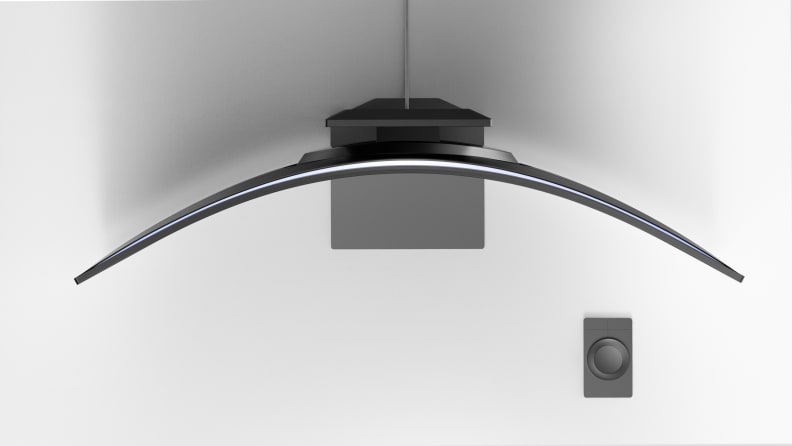
Samsung's 55-inch, curved Odyssey Ark monitor made a big splash during CES 2022
Samsung's Odyssey Ark needs to be seen to be believed: A 55-inch, 1000R (i.e. 1000mm radius) curved gaming display that raises and rotates with much more flexibility and fluidity than you'd expect from a monitor this big. This was easily the monitor that generated the most buzz during CES this year.
What's really impressive about this one is the sheer range of possibilities it offers, and not just to gamers. Unlike more standard, ultra-wide curved monitors with 21:9 or larger aspect ratios, the Ark's 55-inch Neo QLED screen has a traditional 16:9 aspect ratio, meaning it can be a massive gaming or media display.
It can also break down into multiple smaller screens, meaning that with its Multiview capabilities, you can set up two or three windows or inputs side by side in normal aspect ratios, kind of like having three 20-inch monitors in one. But the coolest thing we saw was when the Ark was rotated from landscape to portrait mode: it automatically re-aligned all three windows from side-by-side to stacked, while maintaining their shape and presentation.
Pricing and availability are still forthcoming, but you can bet this big boy is going to cost a pretty penny. We'd love to get it in for a full review, but we'll need to clear a lot of desk space first. In any case, the concept is stellar—that's why we gave it a CES Editor's Choice award.
Samsung Odyssey Neo G8
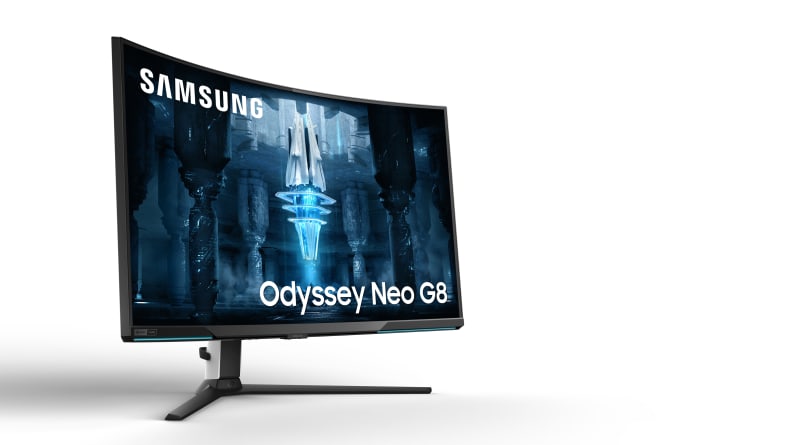
The world's first 240Hz 4K screen
While not quite as big and flashy as the Ark, the Odyssey Neo G8 is another exciting gaming monitor from Samsung. Offering a big 32-inch screen, the Neo 8's claim to fame is that it's allegedly the world's first 4K resolution monitor that boasts a 240Hz refresh rate. Since 4K resolution has started to become mainstream on gaming monitors, the next developmental stage (for gamers, anyway) has been to shrink response times and raise refresh rates, which is a tricky engineering process every time the pixel count gets an upgrade.
Samsung claims the Odyssey Neo G8 will deliver a 1ms response time, gaming enhancements like FreeSync Premium Pro and G-Sync, as well as 2000 nits of brightness powered by mini-LEDs. While the Ark is awesome, it's also borderline impractical for most; the G8 will also likely be quite expensive, but it seems like a great option for gamers looking for a premium experience.
Samsung Smart Monitor M8
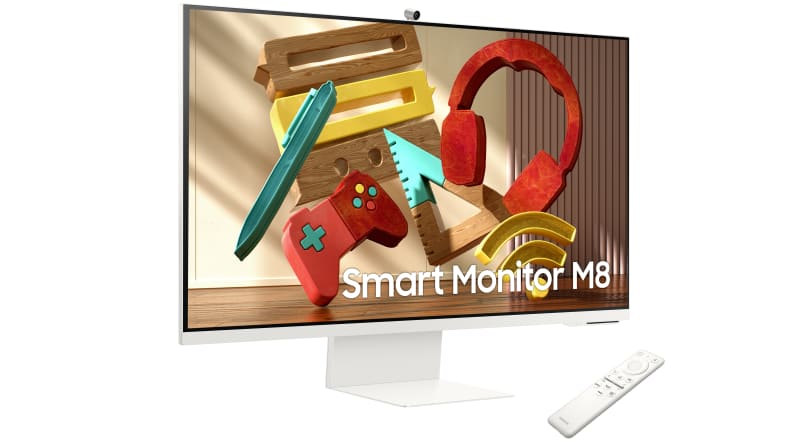
Samsung's second-gen Smart Monitor continues to defy classification
The second-gen Samsung Smart Monitor, the M80B is a bit of an oddball. It isn't a performance-focused gaming or design monitor, but it also doesn't boast the minimalist trappings that help general-use office monitors sell.
Instead, the Smart Monitor acts as a centerpiece for myriad connectivity functions: It's an Internet of Things (IoT) hub, has built-in video communication apps and cloud gaming apps, and can even act as a host for work-related features like Microsoft365 via a function called Workspace. There's also a slim, magnetic webcam mounted on top for video chats.
With a UHD, 400-nit screen and dock capabilities, the Smart Monitor can be a standalone workstation of sorts, as well as a TV (thanks to built-in Samsung Tizen Smart Hub functions) and cloud gaming hub. While pricing hasn't been announced, we think the price point will be a crucial element in determining whether the new Smart Monitor delivers mainstream appeal. But there's no denying it's an intriguing option for the right buyer.
LG DualUp Monitor
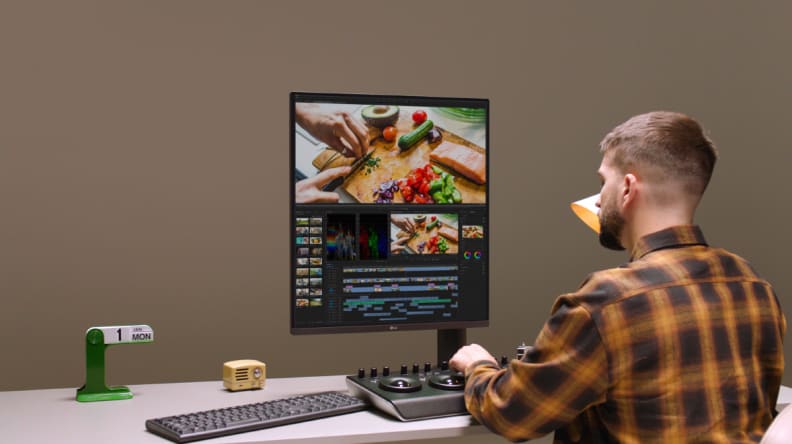
LG's DualUp Monitor boasts a wholly new design for professionals and productivity seekers
The LG DualUp Monitor (another CES Editor's Choice winner) is ingenious enough that we're honestly surprised no one's done it before.
With the DualUp (28MQ780) you're getting two 16:9, 1440p resolution screens stacked on top of one another. This is the monitor equivalent of a high rise when there isn't enough space to sprawl out: While many folks opt for a side-by-side monitor setup this can take up a lot of desk space and also, according to LG, lead to head swivel-induced strain over time (and don't even get me started on the difficulties in matching color temperature when they're different brands).
The DualUp's vertical presentation grants you effectively the same screen real estate and functionality as two separate monitors in a single stack. The possibilities for folks like video editors or graphic designers are pretty clear: If you have an array of controls on one screen and are observing changes or output effects on the other, it's theoretically a lot easier to sit back and regard both screens in your field of vision (though it's technically a single, almost square 16:18 screen).
This one's another slightly oddball option, but it's certainly innovative. Pricing and availability are still forthcoming, but we're hoping to test this one out when it launches this year.
Asus PG42UQ ROG Swift OLED Gaming Monitor
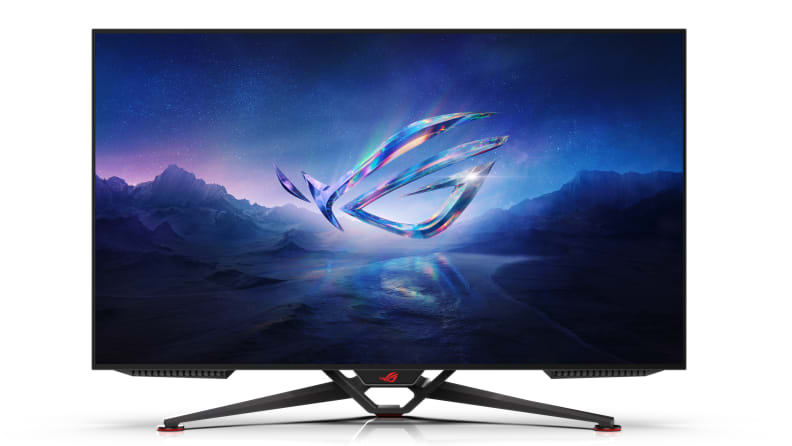
Asus debuted 42- and 48-inch OLED gaming monitors
There's been difficulty in shoring up production yields for OLED panels, which is why for years we've primarily seen them in 55- and 65-inch sized TVs. But 2022 is looking to be the year of smaller OLEDs as evidenced by both LG and Sony with the first 42-inch OLEDs from both brands, and we're seeing big things in small packages for the gaming monitor space, too.
Asus debuted the 48-inch PG48UQ and 42-inch PG42UQ at the show, but the smaller of the two will likely be the sweet spot for most users. While 42 inches is still double the size of the average office monitor, it's a much more manageable product in terms of both price and size to slap onto a desk.
The PG42UQ serves up the picture quality aspects OLED is known for: incredible black levels, vivid colors, and super-wide vertical and horizontal viewing angles. To make it game-ready, Asus has configured it with a 120Hz refresh rate, an astounding 0.1ms response time, 4K resolution, and a hefty hub of HDMI 2.1 and USB 3.0 compatible inputs.
Like most of the monitors on this list, pricing and availability are still unknown, but word on the street is that these Asus OLED monitors could be absolutely perfect gaming displays. We won't know until we get one in for testing, but they're still very exciting prospects.
ViewSonic Portable Gaming Monitor
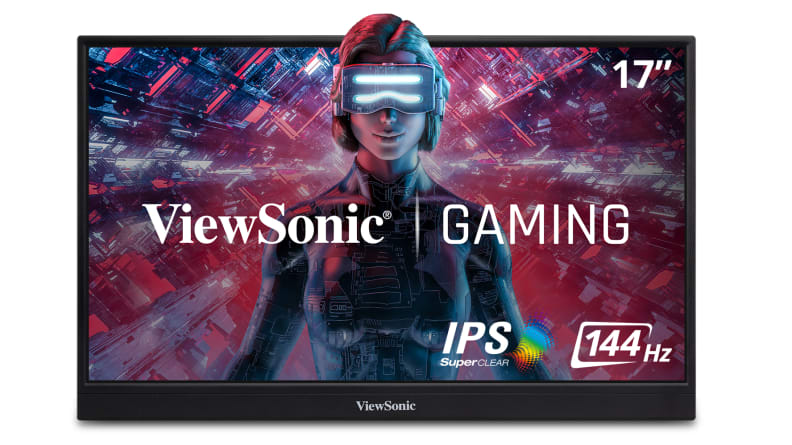
ViewSonic's portable gaming monitor supports a 144Hz refresh rate
Humongous monitors are always buzz-worthy, but what about the other side of the size spectrum? This year, ViewSonic announced a 17-inch portable gaming monitor that you can pack up and take with you for gaming on the go.
With a 1080p resolution, 144Hz refresh rate, and a 4ms response time, the VX1755 seems equally viable for PC and console gaming alike. It's also less than an inch thick and weighs just a bit over two pounds, meaning it should be easy to throw in a bag and take with you for on-the-go gaming. Best of all, this one actually has a confirmed price: $300, which seems quite reasonable given the specifications.
With built-in speakers, a headphone jack, and a foldout stand, this one seems like an awesome screen to pair with already portable gaming devices like a gaming laptop, Nintendo Switch, or even an Xbox Series S.
Alienware QD-OLED Monitor
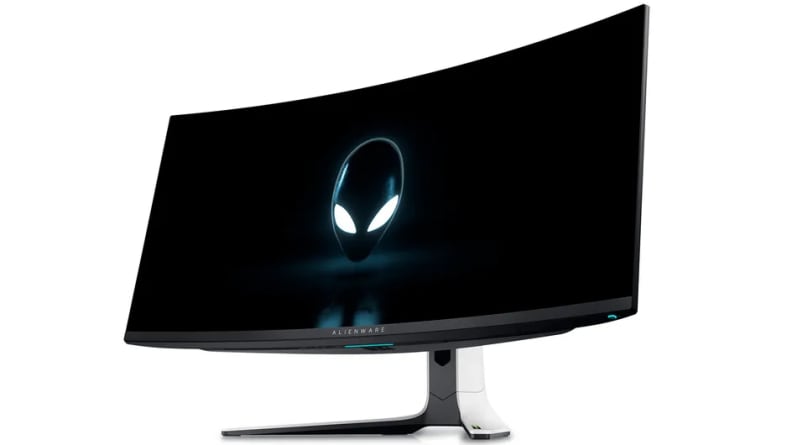
Dell's Alienware gaming brand brought a QD-OLED to the show.
Last but most certainly not least, Alienware showed off the world's first-ever QD-OLED gaming monitor, which caused a lot of jaws to drop.
To understand why this is relevant, it helps to talk a bit about QD-OLED in general. This year's CES is the first time we've seen this much-hyped display tech forming into actual products. With QD-OLED, you're getting the inky black levels and wide viewing angles of OLED, and upping the perceptible brightness and color saturation provided by quantum dot technology.
The result, in this case, is Alienware's 34-inch gaming monster. While it sounded a bit like vaporware at first, a slew of realistic specs have been confirmed: 400 nits peak brightness, 99.3% DCI-P3 (HDR) color, 175Hz refresh rate, 0.1ms response time, and a somewhat unusual 3440x1400 resolution. Best of all, it already has a confirmed release date—March 29th.
No pricing has been confirmed yet, but it's safe to say this is yet another expensive gaming option. But that's to be expected for QD-OLED tech, which might be the next big thing in displays this year.


